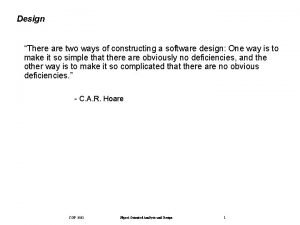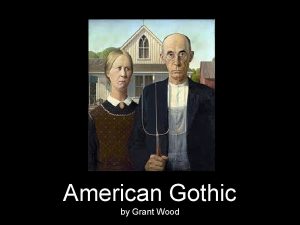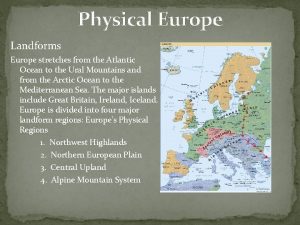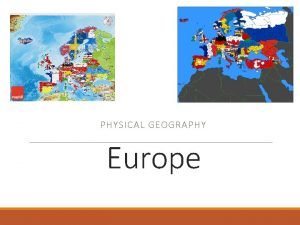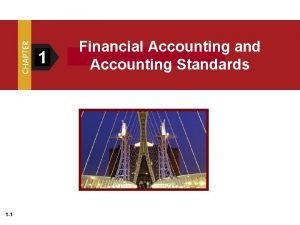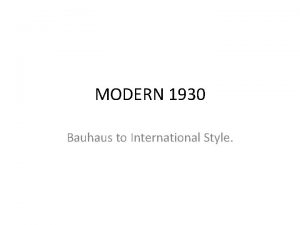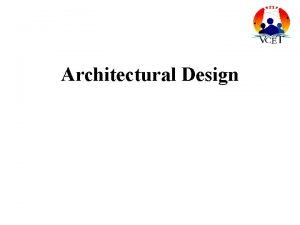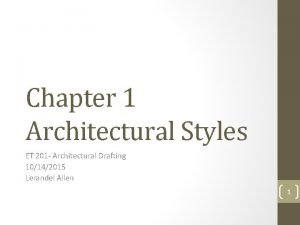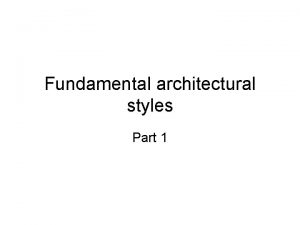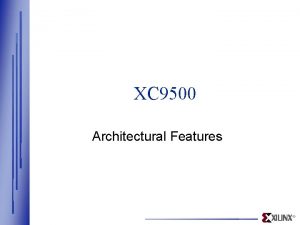The International Style Major architectural style in Europe
















- Slides: 16

The International Style • Major architectural style in Europe & USA • Began in the 1920’s – 1930’ 2 (1980’s) • Term coined by Henry Russell Hitchcock and Phillip Johnson Philip Cortelyou Johnson (1906 -2005) Henry-Russell Hitchcock (1903 -1987)

The most important figures “The big three” Le Corbusier (France) Ludwig Mies van Rohe (Germany) Walter Gropius (Germany)

Nazi’s rejected the modern architecture forcing an entire generation of architects out of Europe. Mies fled to the USA in 1936 extending his influence and promoting Bauhaus which later became the primary source of architectural modernism. The International Style became the dominant approach for decades.

The International Style was striving towards: “Simplification, Honesty and Clarification” The ideals of the style can be summed up in four slogans: “ornament is a crime” “truth to materials” “form follows function” “machines for living” (Le Corbusier)

Identifying features/characteristics Modern structural principles and material (commercial and institutional buildings rather than housing) • • • Concrete Glass Steel (most common) Occasionally reveals skeleton frame construction Exposing its structure Rejected non-essential decoration Ribbon windows Corner windows Bands of glass Balance and regularity Flat roof, without ledge Often with thin, metal mullions and smooth spandrel panels separating large, single-pane windows

The typical International Style high-rise usually consists of the following: 1. Square or rectangular footprint 2. Simple cubic "extruded rectangle" form 3. Windows running in broken horizontal rows forming a grid 4. All facade angles are 90 degrees

The most famous manifestations include: United Nations Headquarters • • • Completed 1952 New York, NY Le Corbusier

Seagram Building • • • Completed 1957 New York, NY (park avenue) Ludwig Mies van Der Rohe (and Phillip Johnson)

Access to new building technologies like reinforced concrete , and steel framework for building meant that designers could seek a whole new approach to what is known as the plan or the layout of the interiors of buildings. The enormous strength of these new materials opened new worlds for designers that were unheard of in building before.

Glass Palace (the Netherlands – Frits Peutz) 1935

Ludwig Mies Van der Rohewig Chicago, Illinois 1949

Ludwig Mies Van der Rohewig Chicago, Illinois 1973

Gropius House Walter Gropius


The Farnsworth House Ludwig Mies van der Rohe

International Style glass house Philip Johnson 1949
 Call and return architecture style
Call and return architecture style Subsystem decomposition example
Subsystem decomposition example 2221 shawanaga trail mississauga
2221 shawanaga trail mississauga Architectural style
Architectural style Europe stretches from
Europe stretches from What strategic waterway is south of the iberian peninsula
What strategic waterway is south of the iberian peninsula What are the 5 major peninsulas in europe
What are the 5 major peninsulas in europe The major key players on the international side are the:
The major key players on the international side are the: The major key players on the international side are the:
The major key players on the international side are the: American accounting standards
American accounting standards The major key players on the international side are the
The major key players on the international side are the John major leadership style
John major leadership style Hát kết hợp bộ gõ cơ thể
Hát kết hợp bộ gõ cơ thể Bổ thể
Bổ thể Tỉ lệ cơ thể trẻ em
Tỉ lệ cơ thể trẻ em Gấu đi như thế nào
Gấu đi như thế nào

